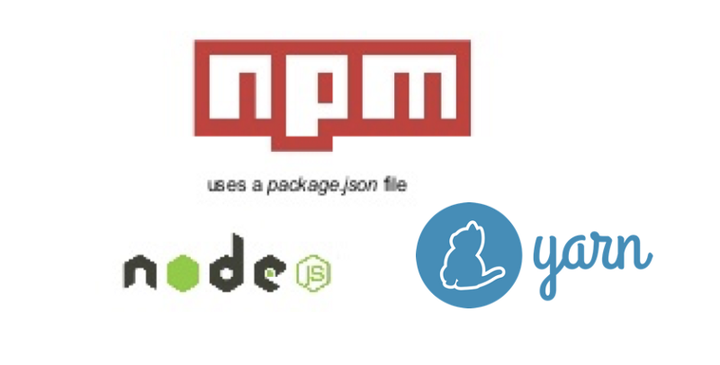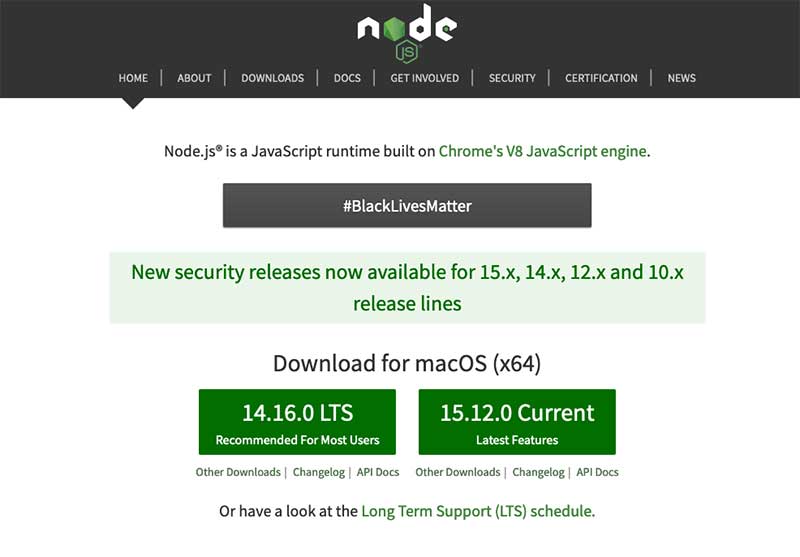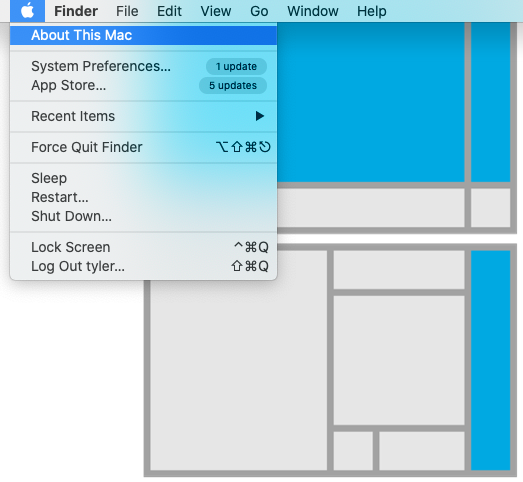

- #NODE JS INSTALL FOR MAC HOW TO#
- #NODE JS INSTALL FOR MAC UPDATE#
- #NODE JS INSTALL FOR MAC CODE#
- #NODE JS INSTALL FOR MAC DOWNLOAD#

You can simply use the Homebrew package manager to uninstall Node packages from your system.
#NODE JS INSTALL FOR MAC UPDATE#
Just execute below commands to update the Homebrew index and then update Node.js. You can use Homebrew to update Node on your system. The newer versions of Node.js releases very frequently. The above output shows that you have installed Node.js version 12.4.0 and NPM 6.9.0 on your macOS system. NPM is used for managing modules of Node.js on your system. node -vĪlso, find the installed version of NPM installed with Node.js. This will show you the installed version info. NPM is installed by default when you install Node. NPM is the package manager that can be used to install Node packages.
#NODE JS INSTALL FOR MAC HOW TO#
In this post, we will learn how to install NodeJS and NPM on Mac and Windows. Now check and verify the installed version of Node.js, Execute below command on terminal. Node.js is a JavaScript-based environment that can be used to create servers applications. The default Node.js will be installed under the /usr/local/Cellar/node directory on your system. You have successfully installed Node.js on your system. Then you can install Node.js package in your MacOS system using the following command: brew update So first update the Homebrew package manager index. Let’s start the installation of Node.js on your Mac system using Homebrew. It is useful for installing most open source sofware like Node Homebrew: Homebrew is a popular package manager for the Mac operating systems.Ao login to your Mac system and open terminal Terminal: You must have Mac Terminal access and little knowledge about working with the terminal application.Prerequisitesīefore starting the installation of Node.js and NPM using this tutorial you must have the following prerequisites This tutorial will help you to install Node.js and NPM on MacOS operating system using the Homebrew package manager. Read this => How to Install Homebrew on macOS It also creates a collection of “modules” that handle various core functionalities like file system I/O, networking (DNS, HTTP, TCP, TLS/SSL, or UDP), binary data (buffers), cryptography functions, data streams, and other core functions. Node.js allows the creation of Web servers and networking tools using JavaScript. Node.js is built on Chrome’s V8 JavaScript engine. The v7.2.1 is your Node.js version, if you receive the message command not found: node instead of that, then it's mean there is a problem with your is an open-source, cross-platform, JavaScript runtime platform that enables JavaScript for server-side scripting to produce dynamic web pages before sending it to the client’s web browser. Your terminal will look like this if Node is installed: $ node -version

In the terminal type node -version then enter. Open terminal (if you don't know how to open your terminal, look at this wikihow). Other than that, just follow the installation instructions, it's pretty straightforward. The installer packed with Node.js and npm, by default, the package will install both but you can customize which one to install by clicking the customize button in the Installation Type step. pkg ofcourse), double click it to install. Once you downloaded the file (with extension.
#NODE JS INSTALL FOR MAC DOWNLOAD#
From the download page, look for a file with extension. If you want to find other NodeJS releases, go here, choose your release then click download. If you are new to Node, just go for the LTS and then click the Macintosh Installer button to download the package. Normally, Node.js recommends two versions of Node, the LTS version (long term support) and the current version (latest release). You can find the installers on Node.js download page.
#NODE JS INSTALL FOR MAC CODE#
Node.js code for STDIN and STDOUT without using any library.Node.js (express.js) with angular.js Sample code.MongoDB Integration for Node.js/Express.js.Keep a node application constantly running.Installing with Node Version Manager under Fish Shell with Oh My Fish!.



 0 kommentar(er)
0 kommentar(er)
